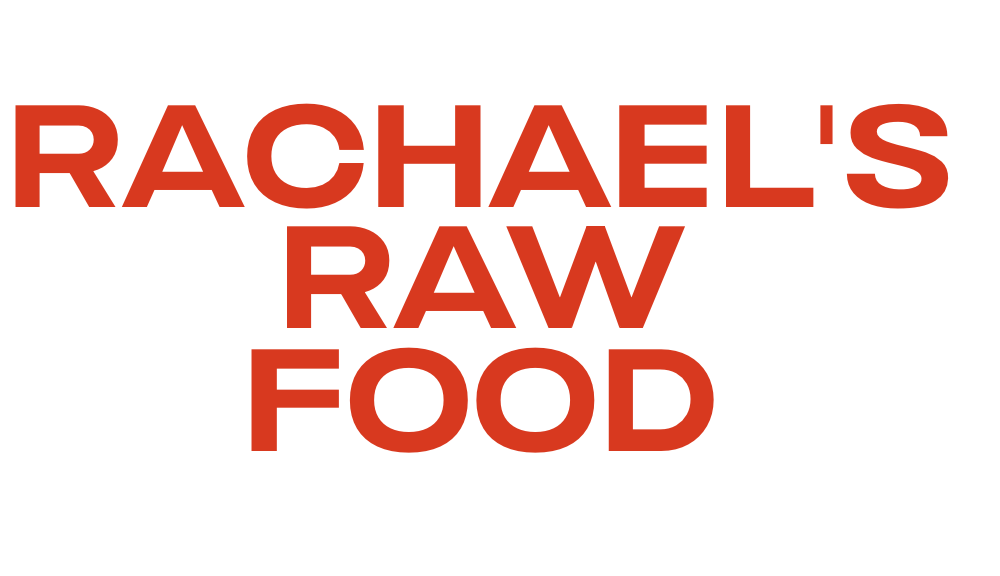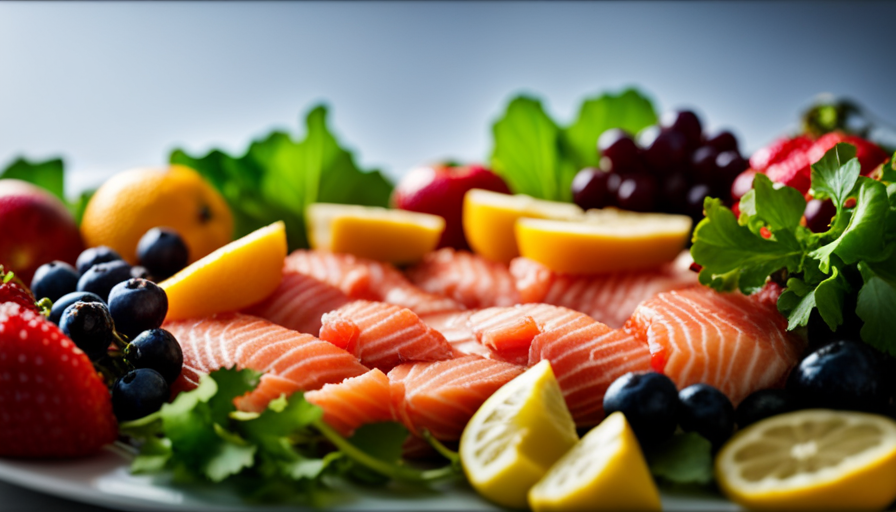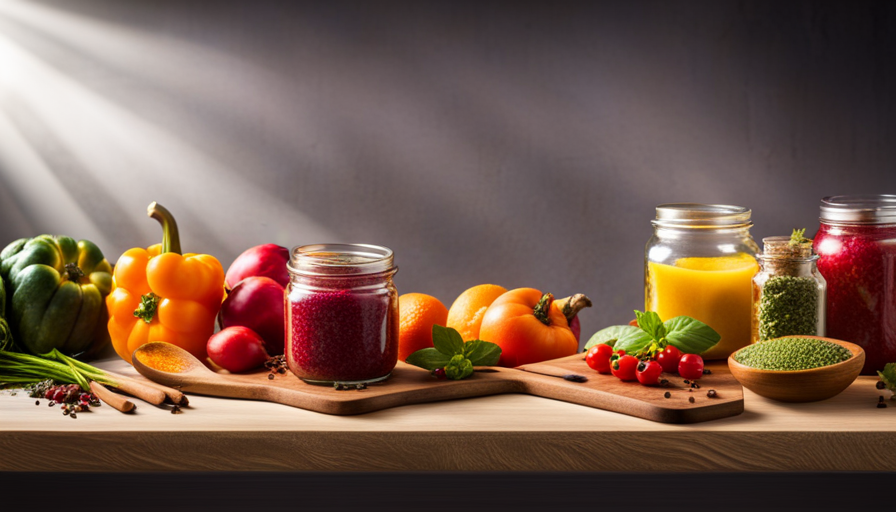Have you ever been in a situation where you forgot to thaw the raw food in advance? We’ve all experienced it, and it can be quite frustrating. But don’t worry, because in this article, I will discuss different methods on how you can quickly and safely thaw your raw food.
Thawing raw food is an essential step in the cooking process, as it ensures even cooking and prevents bacterial growth. While there are several methods you can use, each has its own advantages and disadvantages.
From the traditional refrigerator thawing to the more modern sous vide and microwave methods, I will guide you through each technique, providing detailed instructions and tips along the way.
Whether you’re a seasoned home cook or just starting your culinary journey, this article will equip you with the knowledge you need to thaw your raw food effectively.
So, let’s dive in and explore the various methods that will help you thaw your raw food in no time!
Key Takeaways
- The refrigerator and cold water methods are slower but help maintain the texture, flavor, and nutritional value of raw food.
- The microwave and sous vide methods are quicker and convenient, but there may be a potential loss of quality and texture if overcooked.
- Hot water thawing should be done below 140°F and using a thawing rack or tray for better circulation.
- Other methods such as oven defrost setting, cold water spray, steam, reverse sear, food dehydrator, and thawing tray have their own advantages and considerations depending on the specific needs and circumstances.
Thawing in the Refrigerator
Thawing raw food in the refrigerator is a convenient and safe method to ensure the preservation of its quality. When it comes to thawing, slow and steady wins the race. Thawing in the refrigerator allows the food to defrost gradually, maintaining its texture, flavor, and nutritional value.
There are several benefits of slow thawing in the refrigerator. Firstly, it prevents the growth of harmful bacteria, as the low temperature inhibits their growth. This is crucial in maintaining food safety. Additionally, slow thawing helps retain the moisture within the food, preventing it from becoming dry or mushy. It also allows for more even thawing, ensuring that the entire food item is uniformly defrosted.
To thaw food in the refrigerator, simply place it on a plate or in a container to catch any potential drips. Make sure to keep the food in its original packaging or place it in a sealed bag to prevent cross-contamination. Allow enough time for the food to defrost completely, as larger items may take up to 24 hours.
Thawing raw food in the refrigerator is just one method to safely thaw your items. Another option is to thaw in cold water, which provides a quicker defrosting process.
Thawing in Cold Water
To quickly defrost your ingredients, simply immerse them in icy water and watch the magic happen. Thawing in cold water is a convenient and effective method that can save you time in the kitchen. The process involves placing your raw food, such as meat, poultry, or fish, in a leak-proof plastic bag and submerging it in cold water. It’s important to make sure the water remains cold throughout the thawing process, so you may need to change the water every 30 minutes.
There are several benefits of cold water thawing. Firstly, it’s faster than thawing in the refrigerator, allowing you to prepare your meal in a shorter amount of time. Secondly, this method is safe as long as you maintain a cold water temperature of 40°F or below. The cold water prevents the growth of harmful bacteria. Additionally, cold water thawing helps retain the quality and texture of the food, ensuring that it remains juicy and flavorful.
Now, let’s move on to the next method of thawing: using the microwave.
Thawing in the Microwave
Using the microwave zaps away the icy chill, transforming your frozen ingredients into a warm and ready-to-cook delight. Thawing in the microwave is a quick and convenient way to defrost raw food, but it’s important to do it properly to ensure food safety. To thaw in the microwave, follow these steps:
-
Place the frozen food in a microwave-safe container. Make sure the container is suitable for microwave use to prevent any damage or melting.
-
Choose the right power level on your microwave. Most microwaves have different power levels, so select the appropriate one for thawing. Lower power levels allow for more even thawing and reduce the risk of partially cooking the food.
-
Set the microwave timer based on the weight and type of food. Refer to the microwave’s instruction manual for specific guidelines. Be cautious not to overcook the food, as it can result in a loss of quality and texture.
By using microwave-safe containers and selecting the right power level, you can safely and effectively thaw your raw food. Thawing in the microwave is a convenient option, but if you’re looking for a different method, you can also try thawing your food in a sous vide. This technique allows for precise temperature control and maintains the food’s quality and flavor.
Thawing in a Sous Vide
Thawing in a Sous Vide has multiple benefits that make it an ideal method for thawing raw food. It not only ensures a consistent and even thaw throughout the food, but it also preserves the food’s texture and flavor. Additionally, thawing in a Sous Vide allows for precise temperature control, reducing the risk of bacterial growth and ensuring food safety.
When using this method, it’s important to follow temperature and time guidelines to ensure that the food is thawed thoroughly and safely.
Benefits of Sous Vide Thawing
Sous vide thawing offers a multitude of benefits that make it an excellent option for safely and effectively defrosting raw food. With the right sous vide equipment and cooking methods, you can thaw food quickly and evenly, ensuring that it retains its flavor and texture.
Here are four reasons why sous vide thawing is worth considering:
-
Precision: Sous vide allows you to thaw food at a precise temperature, preventing any potential bacterial growth while ensuring the food remains at a safe temperature.
-
Minimal loss: Unlike traditional thawing methods, sous vide thawing minimizes the loss of moisture and nutrients, resulting in tastier and more nutritious food.
-
Versatility: Sous vide can thaw a wide range of foods, including meat, seafood, vegetables, and even delicate desserts, without compromising their quality.
-
Convenience: With sous vide, you can thaw food ahead of time and keep it at a safe temperature until you’re ready to cook, saving you time and effort in the kitchen.
Now let’s discuss the temperature and time guidelines for sous vide thawing.
Temperature and Time Guidelines
With precise temperature and time guidelines, this method ensures that your food undergoes a gentle and controlled revival, resulting in a succulent and mouthwatering dining experience.
When thawing raw food using hot water, it’s important to maintain a temperature of 140°F (60°C) or below to prevent bacterial growth. Fill a basin or sink with hot water and place the sealed food in a waterproof bag. Submerge the bag in the water, making sure it’s fully covered.
Allow the food to thaw for approximately 30 minutes per pound (0.45 kg), checking the water temperature regularly to ensure it stays within the safe range. To further enhance thawing, consider using a thawing rack to elevate the food and allow for better circulation of the warm water.
This method prepares your food for the next step of using a thawing tray to speed up the process even more.
Using a Thawing Tray
To defrost your raw food quickly and conveniently, all you need is a thawing tray – it’s a game-changer in the kitchen! Using a thawing tray offers numerous benefits compared to other thawing methods.
First, it allows for a faster thawing process. The tray is made of a special material that conducts heat effectively, promoting rapid thawing. This means you can have your food ready in a fraction of the time it would take using other methods, such as leaving it on the countertop or using hot water.
Another advantage of using a thawing tray is that it helps preserve the quality of your food. When you thaw your food slowly, there’s a higher risk of bacterial growth and loss of flavor. With a thawing tray, the rapid thawing helps maintain the integrity of your food, ensuring it remains safe to eat and tastes just as delicious as when it was fresh.
Now, let’s move on to the next section about using the defrost setting on your oven.
Using the Defrost Setting on Your Oven
The defrost setting on your oven is like a gentle breeze that slowly brings your frozen ingredients back to life. It offers a convenient and effective method for thawing raw food, especially if you’re short on time.
One of the benefits of defrosting in the oven is that it evenly thaws the food, preventing any areas from remaining frozen or partially cooked. This ensures that your ingredients are ready to be used in your recipe without any worries of uneven cooking.
To use the defrost setting, simply place your frozen food on a baking tray or dish and select the defrost option on your oven. The oven will automatically set the appropriate temperature and time for defrosting. It’s important to note that the defrosting time will vary depending on the size and type of food you’re thawing, so it’s always a good idea to check the progress periodically.
While the defrost setting on your oven is a convenient option, there are alternative methods for defrosting raw food. One such method is the cold water spray method, which involves using a spray bottle filled with cold water to hasten the thawing process. This method can be particularly useful for smaller items like meat cuts or vegetables.
Transitioning into the subsequent section about the cold water spray method, this alternative technique provides a quicker option for thawing your ingredients.
Thawing with the Cold Water Spray Method
For a quicker thawing option, try using the cold water spray method. This method involves gently spritzing your frozen ingredients with cold water. It is especially useful when you’re short on time and need to thaw your raw food quickly.
Using cold water to thaw your ingredients is safer than using hot water because it minimizes the risk of bacterial growth. Hot water can create a warm environment that promotes the growth of bacteria, while cold water keeps the food at a safe temperature.
The cold water spray method is also faster than other thawing methods. The constant flow of water helps to speed up the thawing process by transferring heat to the frozen food more efficiently. It can significantly reduce the amount of time it takes to thaw your ingredients compared to methods like defrosting in the refrigerator.
To use this method, simply place your frozen food in a colander or strainer and run cold water over it, making sure to cover all surfaces. Gently spritzing the food with water helps to evenly distribute the thawing effect.
Thawing with the cold water spray method is a great option when you need to thaw your raw ingredients quickly and safely. However, if you’re looking for a method that combines speed and convenience, the next section will discuss how to thaw with steam.
Thawing with Steam
Using steam to defrost your ingredients is like gently melting away the icy barriers that keep your ingredients trapped in their frozen state. It’s a simple yet effective method that preserves the quality and taste of your food.
Steam thawing is especially beneficial for delicate ingredients like fish and shellfish, as it prevents them from becoming overcooked or losing their moisture. The gentle heat from the steam gradually warms the food, allowing it to thaw evenly without any risk of becoming mushy or dry.
But the benefits of steam go beyond just thawing. Steam cooking is a popular method that retains the nutrients, flavors, and textures of the ingredients. It’s a healthier alternative to frying or sautéing, as it requires little to no oil. Additionally, steam can be used to blanch vegetables, making them vibrant and crisp. It can also be used to reheat leftovers without drying them out, keeping them moist and delicious.
Now, let’s move on to another method of thawing: the reverse sear method. This technique involves slowly cooking the frozen food at a low temperature, followed by a quick sear to create a flavorful crust.
Thawing with the Reverse Sear Method
Thawing with the Reverse Sear Method is a technique that I’ve found to be incredibly effective in cooking raw food. Understanding this technique is crucial for achieving the perfect balance of flavors and textures.
The benefits of using the Reverse Sear Method include a tender and juicy interior, a flavorful crust, and precise control over the cooking process. However, it’s important to note that this method can be time-consuming and requires careful monitoring to avoid overcooking.
Understanding the Reverse Sear Technique
The Reverse Sear Technique is a game-changing method that’ll elevate your cooking skills to a whole new level. If you’re tired of overcooking your meat or struggling to achieve that perfect sear, then this technique is for you. Here are three reasons why the Reverse Sear Technique is worth trying:
-
Perfectly cooked meat: By starting with a low and slow cooking method in the oven, you can ensure that your meat cooks evenly and stays tender and juicy throughout. This is especially beneficial for thicker cuts like steaks or roasts.
-
Beautiful sear: After the meat’s been cooked in the oven, you finish it off with a quick sear in a hot skillet or on the grill. This gives it a beautiful crust and adds a depth of flavor that’s unmatched.
-
Control over doneness: With the Reverse Sear Technique, you have more control over the doneness of your meat. You can easily monitor the internal temperature and adjust the cooking time accordingly, resulting in a perfectly cooked piece of meat every time.
While the Reverse Sear Technique offers many benefits, it does have a few drawbacks. However, these drawbacks are easily overcome with some practice and experience.
Now, let’s dive into the benefits and drawbacks of this technique.
Benefits and Drawbacks
Now that we understand the Reverse Sear Technique, let’s dive into the benefits and drawbacks of this cooking method.
The Reverse Sear Technique offers several advantages, such as achieving a perfectly even cook throughout the meat and creating a delicious crust on the outside. By starting with a low temperature and gradually increasing it, you can ensure that the inside of the meat is cooked to your desired doneness without overcooking the outside.
However, this technique requires more time and patience compared to traditional cooking methods. Additionally, it may not be suitable for thin cuts of meat as they can easily become overcooked.
It is important to note that the Reverse Sear Technique can have health implications if not done properly, as undercooked meat can lead to foodborne illnesses.
With this in mind, let’s explore another method of thawing raw food using a food dehydrator.
Thawing with a Food Dehydrator
When it comes to thawing raw food, one method that I’ve found effective is using a food dehydrator. This method involves placing the frozen food in the dehydrator and allowing the warm air to gradually thaw it.
One of the main advantages of using a food dehydrator for thawing is that it helps preserve the texture and flavor of the food, ensuring that it remains juicy and tender. However, it’s important to note that this method can be time-consuming, as it may take several hours for the food to fully thaw.
Using a Food Dehydrator for Thawing
Using a food dehydrator is like having a secret weapon for quickly and effortlessly thawing raw food. Not only does it provide a safe and efficient way to thaw, but it also preserves the quality and flavor of the food. While there are alternative thawing methods such as using the microwave or running water over the food, a food dehydrator offers a unique and effective approach.
Here is a comparison of using a food dehydrator versus other methods:
| Method | Time Required | Food Quality | Effort Required |
|---|---|---|---|
| Food Dehydrator | Quick | Excellent | Minimal |
| Microwave | Fast | Good | Moderate |
| Running Water | Slow | Fair | High |
As you can see, using a food dehydrator stands out as the fastest and easiest method for thawing raw food. However, it’s important to consider the pros and cons of this method to make an informed decision.
Pros and Cons of this Method
One must weigh the advantages and disadvantages of employing this technique. Thawing raw food using a food dehydrator has its pros and cons.
Pros of using a thawing tray:
- Convenience: A thawing tray allows for hands-off thawing, as you simply place the frozen food on the tray and let it do its work.
- Time-saving: Thawing with a tray can be quicker than traditional methods like defrosting in the fridge, as it uses a combination of heat and airflow to speed up the process.
- Preserves nutrients: The gentle heat used in thawing trays helps to preserve the nutritional value of the food, ensuring that it’s still packed with essential vitamins and minerals.
Cons of using a thawing tray:
- Limited capacity: Thawing trays may have a limited capacity, meaning you can only thaw a certain amount of food at a time.
- Potential for uneven thawing: Depending on the design of the tray, there may be areas where the food thaws unevenly, leading to some parts being partially thawed while others remain frozen.
- Requires electricity: Thawing trays need to be plugged in to function, so if you don’t have access to electricity, this method won’t be suitable.
Benefits and drawbacks of thawing with steam:
- Benefits: Thawing with steam can be a quick and efficient method, as the hot steam helps to rapidly thaw the food. It also helps to retain moisture, resulting in juicy and tender meat.
- Drawbacks: Thawing with steam requires specialized equipment such as a steamer or a steam oven, which may not be readily available in every kitchen. Additionally, there is a potential risk of burns or scalds when working with hot steam, so caution must be exercised.
Using a thawing tray and thawing with steam both have their pros and cons. Consider your specific needs and circumstances before deciding on the best method for thawing your raw food.
Frequently Asked Questions
Can I thaw raw food by leaving it at room temperature?
No, it’s not safe to thaw raw food by leaving it at room temperature. While it may seem convenient, thawing raw food at room temperature can pose significant risks. Bacteria can multiply rapidly in the temperature danger zone, which is between 40°F and 140°F. This can lead to foodborne illnesses.
It’s recommended to thaw raw food in the refrigerator or using the defrost function on your microwave to ensure it’s thawed safely.
Is it safe to refreeze raw food after it has been thawed?
Refreezing raw food after it’s been thawed can be done safely if certain precautions are taken. It’s important to thaw the food properly in the first place, either in the refrigerator or using the defrost setting on a microwave. Once thawed, the food should be cooked immediately and not left at room temperature for more than two hours. If you need to refreeze the food, make sure to do so within a couple of days to maintain its quality and safety.
It’s generally recommended to avoid refreezing raw food multiple times to minimize the risk of bacterial growth.
How long can I keep thawed raw food in the refrigerator before cooking it?
It’s safe to keep thawed raw food in the refrigerator for up to 2 days before cooking it. However, it’s important to check for signs of spoilage before consuming it. Signs of spoilage in thawed raw food include a foul odor, slimy texture, and discoloration. If you notice any of these signs, it’s best to discard the food to avoid foodborne illnesses. Always prioritize food safety by properly storing and handling thawed raw food.
Can I thaw raw food by placing it directly under hot water?
I don’t recommend thawing raw food by placing it directly under hot water. While it may seem like a quick solution, using hot water can negatively affect the taste and texture of the food.
Instead, I suggest using alternative methods for thawing raw food without using hot water. These methods include thawing in the refrigerator, using the defrost setting on your microwave, or using cold water baths. These methods ensure that the food thaws safely and maintains its quality.
Is there a recommended thawing method for specific types of raw food?
When it comes to thawing raw food, it’s important to use the recommended methods for specific types. Thawing meat should be done in the refrigerator, allowing for a slow and safe thawing process.
Seafood, on the other hand, can be thawed in cold water. By following these guidelines, you ensure that the food remains at a safe temperature and reduces the risk of bacterial growth.
Remember, "Patience is a virtue" when it comes to thawing raw food properly.
What is the Best Way to Safely Thaw Raw Food?
When it comes to safely thawing raw food, using proper storing raw food techniques can make all the difference. The best method is to thaw in the refrigerator, as it keeps the food at a safe temperature while allowing it to thaw gradually. This helps prevent bacterial growth and ensures the food stays safe to eat.
Conclusion
In conclusion, thawing raw food properly is essential to ensure its safety and maintain its quality. There are several methods you can use, depending on your time constraints and equipment available.
Whether you choose to thaw in the refrigerator, cold water, microwave, sous vide, or any other method mentioned, it’s important to follow guidelines and take necessary precautions.
Remember, ‘slow and steady wins the race’ when it comes to thawing food, as rushing the process can lead to bacterial growth and potential health risks. So, take your time and thaw your food with care for a delicious and safe meal.










